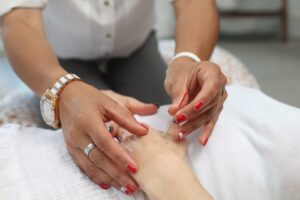Subscribe to the Newsletter
If you are interested in understanding how Traditional Chinese Medicine can improve your life sign up to my newsletter for the latest updates.

What are homoeopathic provings?
Well! Only a proportion of the several thousand substances in regular use as homoeopathic medicines, or ‘remedies’, have ever received these ‘provings’!
Our knowledge of the others arose in a number of ways, the most common being clinical experience – see below.
A ‘proving’ is an experiment carried out on healthy volunteers under careful conditions to discover what happens to the health of each participant after taking the substance being ‘proved’.
Only when tested – proved – on a sufficiently large number of healthy people can one say with fair certainty that a remedy is known sufficiently well to be useful.
Once proved, we know what conditions that remedy can cure. So new provings are an important activity for homoeopaths.
But they take time and considerable care and patience. Often they take up to a year to do. They are carried out by keen volunteers.
It is not the proving itself that inhibits quick access to this new knowledge, but the care needed to carry it out. Also, of course, the time taken to assemble and organise, then understand, and finally tabulate the results of the proving in an easily understandable and usable form.
Many provers believe that doing provings keeps them healthy, because taking a homoeopathic remedy challenges their Vital Force, making it – and them – better at adapting to life.
Assiduous work by Jeremy Sherr and others has led to a resurgence in interest in this important activity: not that they were never done before – far from it – but they were seldom conducted with the thoroughness and rigour we expect nowadays, including control groups and double-blind prescriptions.
Examples of provings since the mid-1980s include:

The basic premise in homoeopathy is that one should treat diseases with medicines that would produce similar conditions in healthy volunteers. That being so, it is important to find out what medicines do to healthy people!
So,
When you have a good idea of what happens – in a large group of different kinds of healthy people – you can use that information to treat someone who presents with similar symptoms.
Because there are so many people on Earth and so many possible ways of responding to ill-health, it is unlikely that we’ll ever have a remedy for every individual and condition.
However, that still leaves a huge number of people for whose diseases we do have remedies.
Many remedies were discovered through ‘proving’ them.

Samuel Hahnemann, who discovered homoeopathy, was the first to recognise this. He proved new medicines on himself first and then on his family and friends. Only then did the medicine become a ‘remedy’.
But that’s not the only way! Some are discovered through clinical experiment, such as when someone takes something (which could be a normal orthodox Western-style medicine) that makes the individual better very much faster than usual. A homoeopath might reasonably argue that in this particular individual’s case, the medicine was closely homoeopathic to the patient’s condition.
By carefully studying that patient’s symptoms before taking the remedy a picture can be drawn of what that medicine can cure. (Bear in mind the primary and secondary actions of medicines, for more about which also read Homeopathic Remedy.)

Stay in Touch!
No spam, only notifications about new articles and updates.

Book a Video consultation if you want to know more about your symptoms

This Introductory Chinese medicine course introduces you to the amazing thinking behind this ancient medicine, now increasingly in demand.

The Scottish College for Chinese medicine provides introductory courses for all, explaining Chinese medicine and its cultural background.

Master Tung’s acupuncture is a hidden treasure, lost to China but recovered in Taiwan from where it spread round the world.

Knee pain has five main causes. It’s certainly worth trying acupuncture before you resort to surgery!
Subscribe to the Newsletter
If you are interested in understanding how Traditional Chinese Medicine can improve your life sign up to my newsletter for the latest updates.
Subscribe to the Newsletter
If you are interested in understanding how Traditional Chinese Medicine can improve your life sign up to my newsletter for the latest updates.